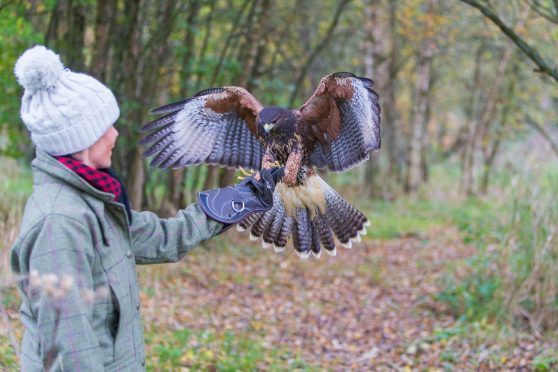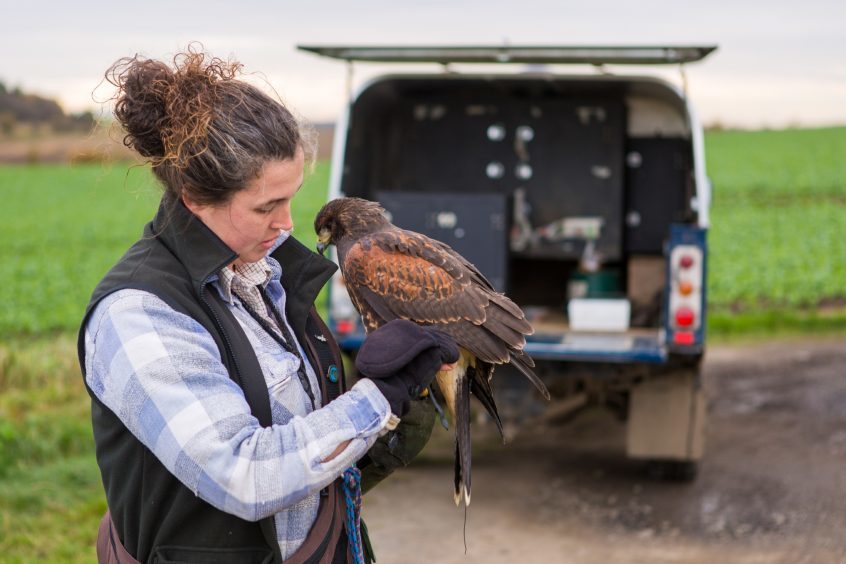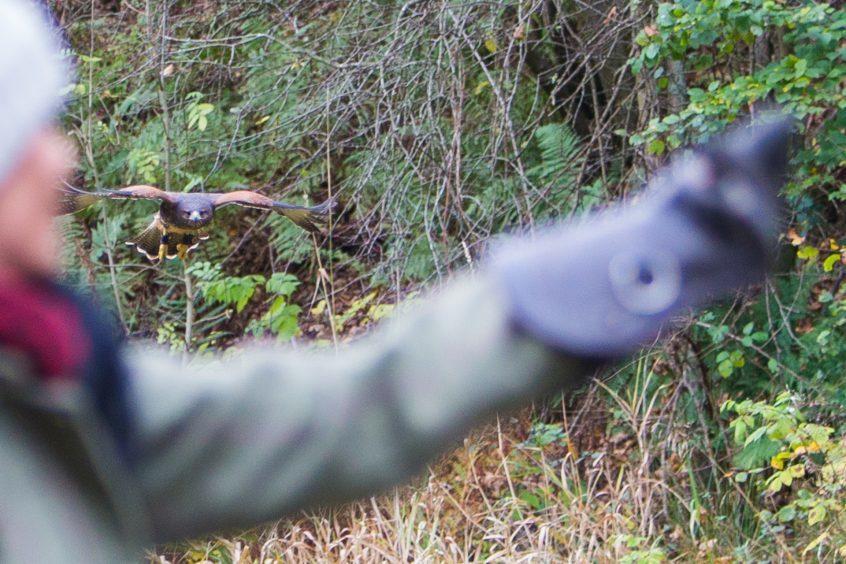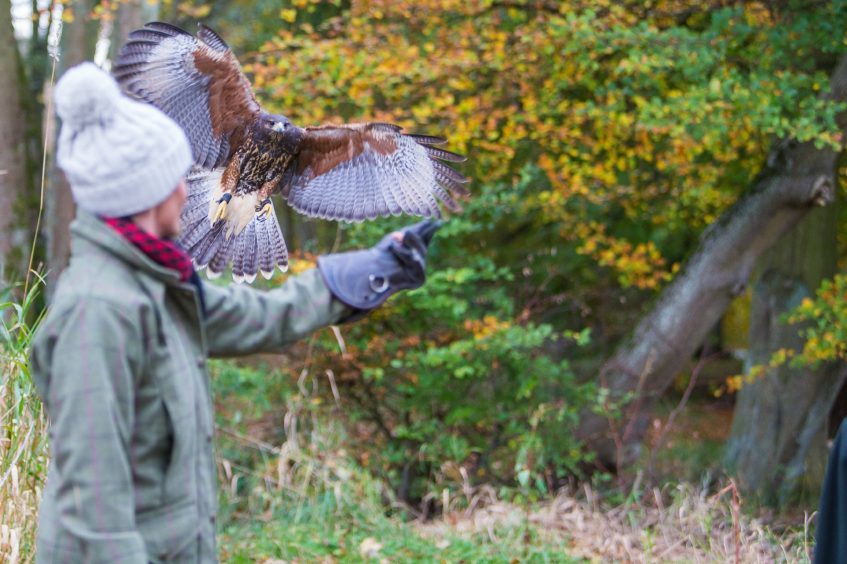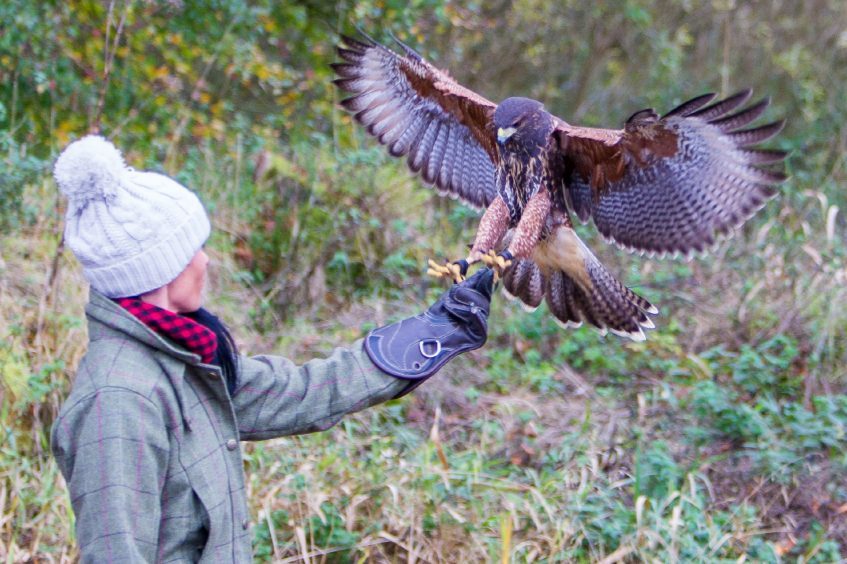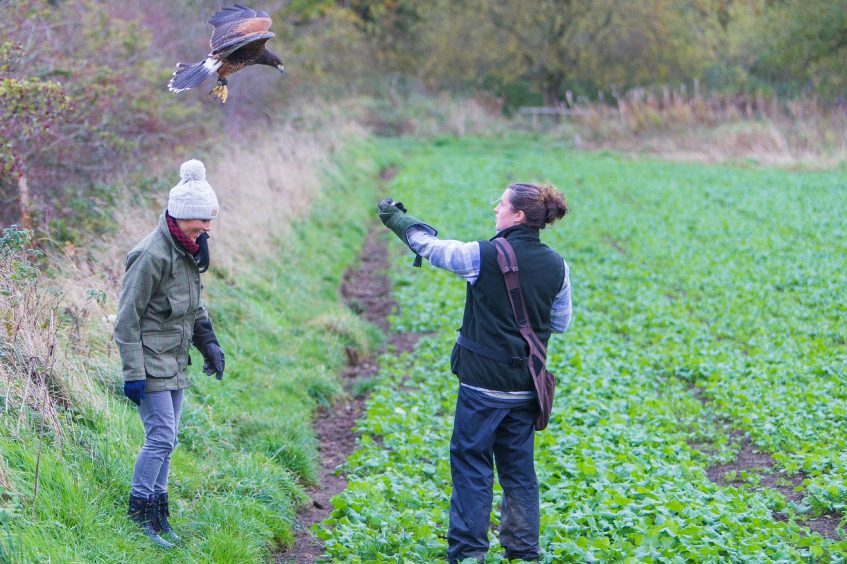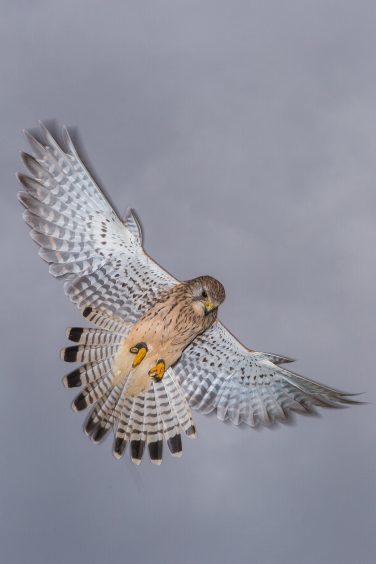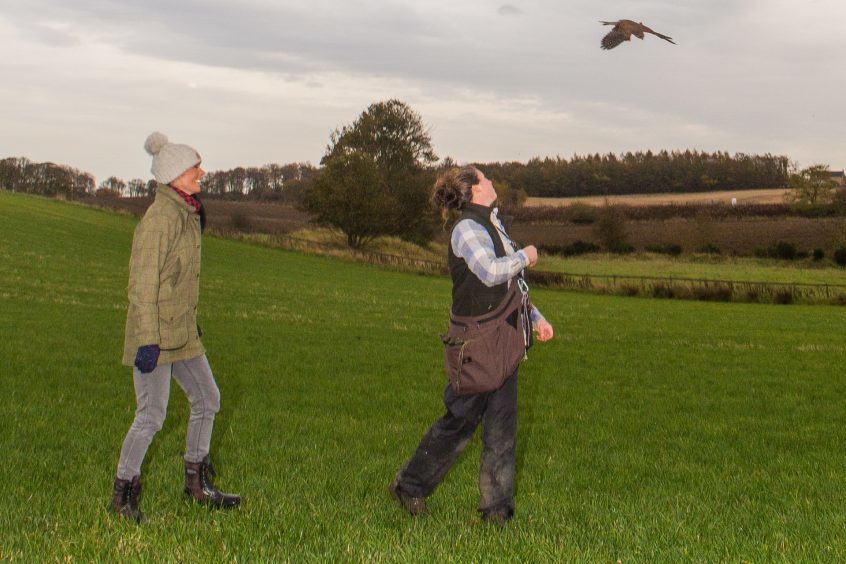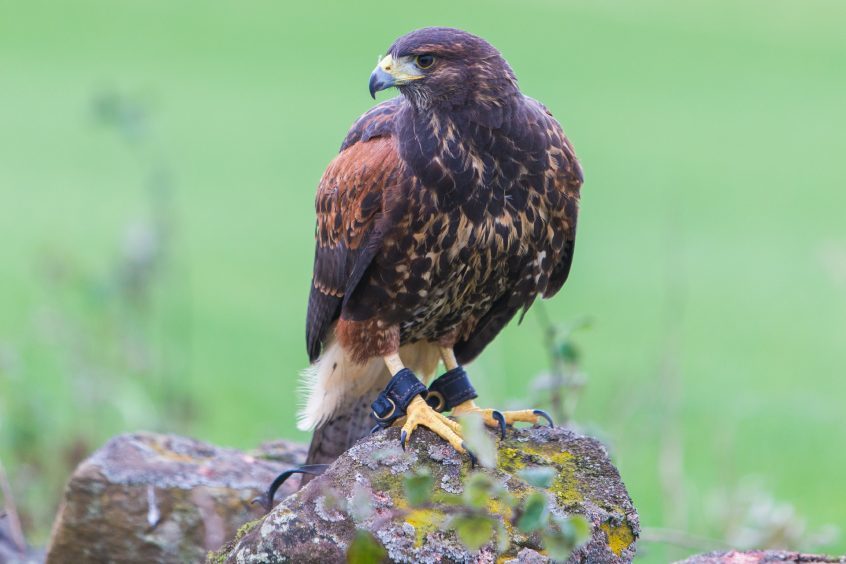There’s something special about watching a bird of prey in flight. Gayle is lucky enough to fly one…
As the majestic Harris hawk swoops down to land on my gloved fist, I’m overcome by a great sense of honour.
It’s the first time the bird has flown free, and rather than going AWOL, she’s decided she trusts me enough to come back to me. Phew.
I’m spending the afternoon with Roxanne Peggie of Fife-based Elite Falconry and she’s picked out a couple of birds for us to fly.
The original plan had been to fly Marra, a huge white-tailed eagle, but it’s not windy enough for this magnificent bird of prey to take to the skies.
I’m certainly not disappointed because instead, I’m getting to fly Artemis, a 22-week-old female Harris hawk.
Because she’s never flown free until today, Roxanne starts off by attaching her to a long safety cord called a “creance”. If she makes a bid to escape, this will stop her.
Placing a piece of dead mouse into the leather gauntlet I’m wearing and asking me to hold it up, Roxanne is delighted when Artemis does the right thing and comes to me.
“That shows she’s comfortable allowing you into her personal space,” she says. “Let’s hope she comes back without the creance.”
Come back she does – time and time again. I’m very pleased and even start to feel a bit of a bond with the bird and am sorely tempted to stroke her, but I absolutely must not.
“They’re non-tactile birds and oils in human skin act as a solvent to the oil in feathers that keep the bird waterproof,” explains Roxanne.
“That can leave a bird prone to waterlogging in damp weather.”
As we walk through fields and woodlands, Artemis is never far behind, although some of her initial landings are a little clumsy.
“This is the first time she’s flown from tree to tree, on hedges,” says Roxanne. “She’s showing great promise!”
Her eyesight is amazing – around eight times stronger than mine.
So what makes her want to stick with us, and not skedaddle?
“Harris hawks are naturally very social and Artemis wants to be with us, because she views us as part of her team,” explains Roxanne.
But no bird of prey can ever truly be tamed. The best a falconer can achieve is a working partnership, accepting that although the bird will tolerate handling and hunting with – but not for – him or her, it will revert to a wild state in the blink of an eye.
Like all birds at Elite Falconry, Artemis was reared for the first few weeks of her life by her parents in an aviary with no human contact.
She only saw a human for the first time three weeks ago, and since then, Roxanne has been training her for up to five hours a day.
Have any birds flown off and never come back?
“So far, no!” smiles Roxanne. “But it’s worth remembering that although captive bred, they are effectively wild and have a mind of their own, so you need to be careful.
“The idea is that we train them through a combination of appetite management and manning (acclimatisation to living and working with humans).
“If we do that intensively, the birds shouldn’t want to leave because they associate all positive things in life with us.”
In essence, hawks return to the falconer for food, not for affection, and must be a little hungry when flown.
Once Artemis is finished, Roxanne brings out a four-year-old kestrel named Mito.
She’s small and very cute and I watch in awe as she hovers high above the ground, swooping down to grab pieces of chicken that Roxanne chucks into the air.
What I find most fascinating about Mito is her amazing UV vision. She detects mice by following their trails of urine.
“Mice are incontinent so the kestrel hovers over a large pool of urine and then swoops,” explains Roxanne.
After a few minutes, we spy a wild kestrel. We need to be cautious as trained birds and wild birds have been known to squabble, posing a risk or injury.
Roxanne, 30, has worked for Elite Falconry for 15 years, and is passionate about the sport.
“If I didn’t do it full-time, I wouldn’t have the opportunity to practice the sport and fly birds,” she says.
“It’s all about training and building up a relationship with the birds, so that they learn to trust you.
“It’s hard work and people who come to watch displays only see the end result – they don’t see the massive amount of work it takes to keep the birds’ environment clean, to ensure they’re all in good condition and enjoy a varied diet.”
info
Birds of prey at Elite Falconry are fed once a day unless they’re breeding. They enjoy everything from chicken to mice, rats, quail, rabbit, venison and hare.
As well as offering bespoke experiences, Elite Falconry also offers flying demonstrations, hunting days and pest control services.
They also do a lot of filming, and just last month, they put a tiny onboard camera on white tailed sea eagle Marra’s back and produced a film as she cruised over the Orkney Islands.
Elite Falconry was set up in 1998 and trains hawks, falcons, eagles, vultures and owls to fly and behave in a trained and controlled state while retaining their natural instincts and behaviour.
Their base is at Cluny Mains Farm, near Kirkcaldy and they have more than 50 birds of various breeds. www.elitefalconry.com
